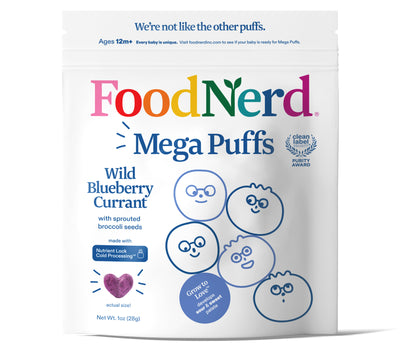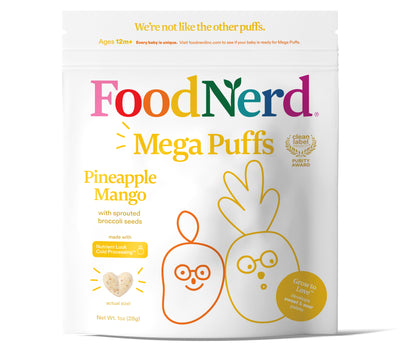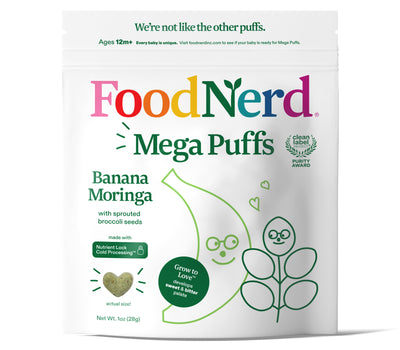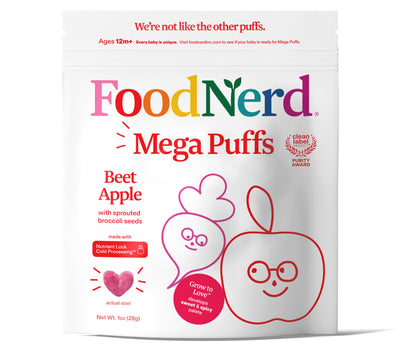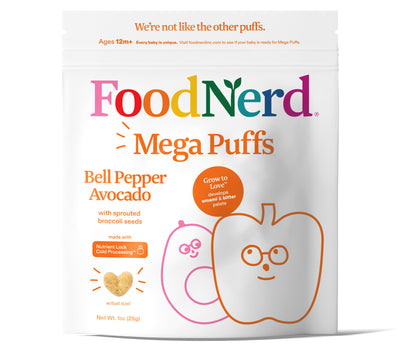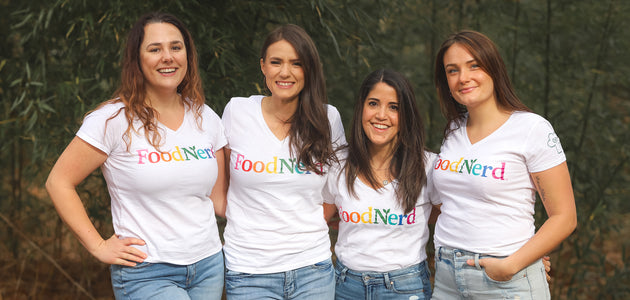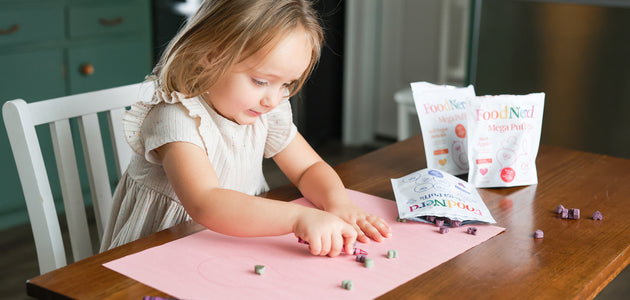
You may have seen us using the term "mylk" throughout our website and you've probably asked yourself "Is this a typo?"
Today we answer that commonly asked questions with... no! It is not a spelling error, but rather a call to action to use "mylk" instead of "milk."
What's the Difference Between Milk & Mylk?
Milk often refers to the lactation of a mammal (human, cow, goat, dog, cat, etc)
Mylk is directly referring to plant-based milk alternatives (oat, almond, soy, rice, coconut, etc.) Instead of having to say non-dairy milk, we can simply refer to it as mylk!
*Note: many non-dairy milk brands use "Milk" in their title - they are indeed plant based! The "Milk" doesn't necessarily have to be referring to animal based milk.
In other words: Milk can = Mylk, But Mylk ≠ All Milk
Why do we encourage our customers to use mylk instead of milk?
- Better for the environment
- Healthier for you
- Better for the animals
Better for the environment:
We do our best as a company to be as environmentally conscious as possible! While you may have seen articles floating around regarding the environmental impact of almonds, it's important to recognize that there are two sides to every story.
While this newly popular beverage is in need of some improvements in their resource efficiency, it's still monumentally better for the environment than dairy milk.
Environmental science is tricky, because for every answer there seems to be another question. There is no perfect solution, there is only the closest fit.
We broke down Poore & Nemecek's work on environmental footprint of 4 different Mylks vs Cows Milk into the following graphic:

As you can see, all four mylks outshine the cows milk. But if we had to pick a winner? It would be a tie between soy and oat milk.
Recently, one of the most respected scientific journals “the Lancet” created the EAT Lancet Commission on Food, Planet, Health.
This Commission set out to find out how we could feed 10 billion people on a healthy diet, within planetary boundaries. In this study, they encourage reducing dairy intake (including milk, butter, cream, etc) to 150 calories per day. They also noted that even slight increases in this amount could make their overall goal nearly impossible to achieve. Read more here.
Healthier for You:
Obviously, we are all about health here at FoodNerd, and dairy after infancy is something we'd like to draw attention to.
We want to start by saying how absolutely incredible breast milk is for babies!
Mothers milk is a food that sustains a child until their nutrition can come from solid food. Not only is there fat, protein, and carbohydrates in breast milk - but also hormones (oxytocin, progesterone, etc.) and antibodies (mothers can sense when their babies are ill and will change the composition of the milk for the child). Incredible right?!
But continuing to consume milk on a regular basis (after infancy) becomes problematic. This is what a majority of Americans do now! Not only that, but we drink this hormonal fluid from a whole different species (mostly cow, sometimes goat, never dog/possum/or pig though!)
Why Decrease Dairy for health?
Lactose Intolerance
Dairy consists of a natural sugar called lactose. As we get older, we begin to lose the enzyme that allows us to digest lactose (lactase). This is a completely natural and normal process. Did you know around 70% of the population is lactose intolerant?
Lactose intolerance is especially high within a specific ethnicity (samples from North America Geographic Region):
- ~75% African Americans
- ~90-95% Asians
- ~90-100% Native Americans
- ~60-80% Ashkenazi Jews
- ~50% Latinx

It took 30 years, but Soy milk was finally added to the USDA Dietary Guidelines in 2010 as an alternative to dairy milk - despite fortified soy milk being around since the 1930s!
If so many Americans are intolerant to dairy, why does the USDA encourage every American to consume 3 cups/day, with only a footnote on non-dairy milks?
Saturated Fat
Dairy fat has one of the highest proportions of saturated fat in the food supply -think butter, cream, whole milk, & cheese. Saturated fat has long been connected to Cardiovascular Disease (CVD), the world's biggest killer according to the World Health Organization.
There are countless studies connecting saturated fat to CVD, so much so that the American Heart Association recommends cutting down on saturated fat laden foods for no more than 5% calories coming from saturated fat
In other words, if you're eating a 2000 calorie diet, 120 calories should come from saturated fat, or about 13 grams of saturated fat.
Lets walk through one day of "healthy" eating:
- Start your day with a 3 egg cheesy spinach, tomato omelette (1 pat butter, you're going light!) and 1 cup of whole milk
- Lunch is a turkey deli sandwhich with 1 slice cheese, 1 T mayo, sprouts and lettuce on whole wheat bread.
- Dinner is a large rosemary chicken breast with sauteed carrots, onions, and asparagus (in olive oil)

Guess how much saturated fat in just 1520 calories?
Nearly 28 Grams, 16.5% of calories coming from saturated fat that's over 3x the recommended amount.
Where did a majority of the saturated fat come from? Dairy and meat.
- Dairy =16 grams
- Meat & eggs = 8 grams
- Vegetables/whole grains/unrefined oils = remaining 4 grams.
Many studies have shown that by replacing saturated fats with alternate plant-based foods, such as healthy carbohydrates (Whole grains, vegetables, fruits) and Polyunsaturated Fatty Acids (PUFAs: i.e. rapeseed oil, EVOO), one can decrease their risk of CVD.
The example diet above is also low in fiber, providing only 60% (15G) of the recommended daily value for women and 50% of the recommended daily value for men. Fiber is important because it is one of the ways to naturally lower your cholesterol (which is raised by eating saturated fat, and ultimately contributes to CVD). No fiber can be found in cows milk.
Hormones
Their is a plethora of research looking at how both added hormones, as well as the natural hormones in dairy milk influence the body.
Added hormones:
- rBGH (Recombinant bovine growth hormone)
rBGH stimulates more milk production than what is natural for cows to sustain. While there is no direct effect on humans from rGBH, it may increase the production of human hormones such as IGF-1 (Insulin growth factor 1)
Natural hormones:
- Prolactin
- Estrogen
- Progesterone
- Corticoids
- Androgens
While the verdict is still out on if these hormones definitely cause direct harm - there is a good amount of research to suggest that they, at the very least, contribute to various health issues (i.e. Prostate Cancer, Breast Cancer, Colon Cancer, Pancreas Cancer, Early Puberty in Children, Triggering Adolescent Acne, amongst others)
The potential for increased IGF-1 (which leads to various cancers) has resulted in countries such as Canada, Japan, Australia & New Zealand as well as the European Union, to ban the use of rBGH.
Better for the Animals
We don’t want to get too heavy here, but modern dairy is scary!
We grow up believing that milk just magically comes out of cows' udders and that they need to be milked by humans. But the reality is that cows are just like humans in the sense that we are both mammals and only produce milk after being pregnant and having a baby.
Life of a dairy cow:
- Impregnate Her
- With bull semen (yes, there's a bull semen industry)
- Take her baby away
- Baby cows will want to nurse from mom, as babies naturally do. We take the baby away (mom cries out for her baby), feed them fake formula, if its' a boy he'll either be killed immediately, sold as veal, or sent to be livestock. If it's a girl she'll most likely have the same fate as mom.
- Keep her indoors ( oh how we can empathize in 2020 )
- While a small percentage of small farms do allow for grazing (~120 days of the year) a majority of the time, cows are held indoors year round. Cows need to be milked multiple times day (women who have breast fed understand the pain of not nursing or pumping after too long!), it isn't cost or time efficient to let them roam outside only to have to herd them 3x a day! They have also been bred (as well as fed hormones) to create more milk than they're meant to.
- When she no longer creates enough milk, repeat the process until she is spent.
- Cows in a natural environment can live up to 20 years, dairy cows? 5-6 years is the average before she becomes a downer. Downer cows are ones that, as the name suggests, fall down and cant get up. They no longer can sustain the lifestyle.
- Downer cows (as well as cows who no longer create enough milk) are sent to slaughter.
These 5 steps happen in the majority of dairy farms, large and small. They are the facts of life and business efficiency: You need to have a baby to create milk, you cant have the baby drinking the milk if you are going to be selling it for profit, you need to be able to manage multiple cows and milk them daily, you need to repeat the process until she no longer creates milk or creates insufficient amounts, and then you make the profit from selling her for slaughter because it wouldn't be economically feasible to keep all downers or send them to farm sanctuaries.
Data from the USDA (2007) shows that over 80% of milk sold in The US is from factory farms. What happens in CAFOs (caged animal feeding operations) is often much worse than what we described above, as there is added abuse, neglect, and death at play and at risk when you are a large scale operation.
It's so bad that 25 states have attempted to pass (with 6 succeeding) "ag-gag" laws, laws that punish whistle blowers for exposing (recording, sharing images/video) what happens behind the scenes of farms.
Whew. That was heavy! Here are some videos of happy cows bouncing around being the giant puppies that they are (and here's one with a calf and piglet becoming best friends)
So What Can I do?
With a wide variety of mylk available - its fun to experiment and find what suits you best!
- Oat
- Soy
- Almond
- Cashew
- Coconut
- Flax
- Pea
- Hazelnut
- Rice
- Hemp
- Walnut
- Banana
You may be partial to one over another - and we understand that! That's why we want to give you a list of some of our favorite mylks. Check these brands out:
Our Favorite Mylks
Oatly:

The original idea behind Oatly was to find a way to make a nutritious liquid product for people who just didn’t like cow’s milk, were lactose intolerant, or were unwilling to use it for personal reasons. Today, the concept of producing a drink directly from oats instead of first feeding oats to a cow and letting the cow process them into milk is an option but back when we started in the 1990s most people thought we were totally crazy. That’s okay, we are happy to be right where we are now making quality liquid oat products for you to enjoy. Thank you very much.
To learn more about Oatly, visit https://us.oatly.com/, or find us on Facebook and Instagram.
Silk (Soy)**

**Unsweetned Fortified Soy Mylk is one of two mylk substitutes that should be used for toddlers who are dependent on it (rather than 100% from food) for fat/calories/protein/vit D and Calcium.
"Here at Silk, we believe in making delicious plant-based food that does right by you and fuels our passion for the planet. That’s been our elevator pitch (OK, carton pitch) for more than 25 years, and it’s why we’re among the OGs of dairy-free. We’re here for everyone, from vegans to burger lovers, because our purpose is progress. And everyone can make room in the fridge for that"
To learn more about Silk visit https://silk.com/, or find us on Facebook and Instagram.
Ripple**

**Unsweetened Fortified Ripple mylk is the second of two mylk substitutes that should be used for toddlers who are dependent on it (rather than 100% from food) for fat/calories/protein/vit D and Calcium.
"Ripple exists to make dairy-free as it should be: high in protein, low in sugar, loaded with nutrition and delicious.
Ripple has 8x the protein of almond milk and half the sugar of dairy milk. It’s high in bioavailable calcium (50% more than milk), potassium and provides a good source of omega-3s. It’s lower in calories than milk and best of all, it has the creamy, delicious texture we think our dairy-free friends are missing.Finally, we believe in running our business the right way. Ripple is a registered and certified Benefit Corporation. We use only natural ingredients and our bottles are made of only 100% post-consumer recycled plastic that is 100% recyclable."
To learn more about Ripple, visit https://www.ripplefoods.com, or find us on Facebook and Instagram.
Elmhurst 1925:

"Elmhurst 1925 makes simple, nutritious and incredibly delicious plant-based nut and grain milks. Elmhurst was founded in 2017, but the company’s roots date back to 1925. Originally Elmhurst Dairy, the multigenerational, family-run organization operated for almost a century under Max Schwartz and son Henry. After a meeting with plant nutrition pioneer, Dr. Cheryl Mitchell, Henry made a progressive pivot and decided to close his famous dairy plant and found Elmhurst Milked. All Elmhurst plant milks are created through a unique HydroRelease™ method, which uses water to harness the full nutritional content of raw nuts, grains, and seeds. Nutrients are separated and recombined naturally to form a smooth, creamy beverage without the use of added gums or stabilizers. All Elmhurst varieties have six ingredients or less, no added gums or emulsifiers, and up to four times as many nuts as other leading brands."
To learn more about Elmhurst, please visit www.elmhurst1925.com, or find us Facebook and Instagram.
Malibu Mylk:

"Malibu Mylk is the world’s first organic flax mylk made from the whole ground flaxseed. Think MILK but without the dairy. Our plant-based mylk is allergen-free, which means no gluten, nuts or soy."
To learn more about Malibu Mylk, visit https://malibumylk.com/, or find us on Facebook and Instagram.
Joi

"JOI was born from the shared goal of creating high-quality, delicious, and environment-conscious plant-based milk that’s far superior to the stuff you’re used to finding at the local supermarket, without all the time and energy of traditional homemade plant milk."
To learn more about Joi, visit https://addjoi.com, or find us on Facebook and Instagram.
These are just a few of the multitude of mylks on the market. Are we missing your favorite? Let us know info@foodnerdinc.com
Sources
- https://www.thelancet.com/journals/lancet/article/PIIS0140-6736(18)31809-9/fulltext
- https://www.who.int/news-room/fact-sheets/detail/the-top-10-causes-of-death
- https://www.ncbi.nlm.nih.gov/pmc/articles/PMC5492032/
- https://www.cochranelibrary.com/cdsr/doi/10.1002/14651858.CD011737.pub2/full
- https://www.heart.org/en/healthy-living/healthy-eating/eat-smart/fats/saturated-fats
- https://pubmed.ncbi.nlm.nih.gov/27557656/
- https://www.thelancet.com/journals/lancet/article/PIIS0140-6736(18)31788-4/fulltext
- https://science.sciencemag.org/content/360/6392/987
- https://www.ncbi.nlm.nih.gov/pmc/articles/PMC2715202/
- https://pubmed.ncbi.nlm.nih.gov/19217359/
- https://www.ncbi.nlm.nih.gov/pmc/articles/PMC4524299/
- https://pubmed.ncbi.nlm.nih.gov/11566656/
